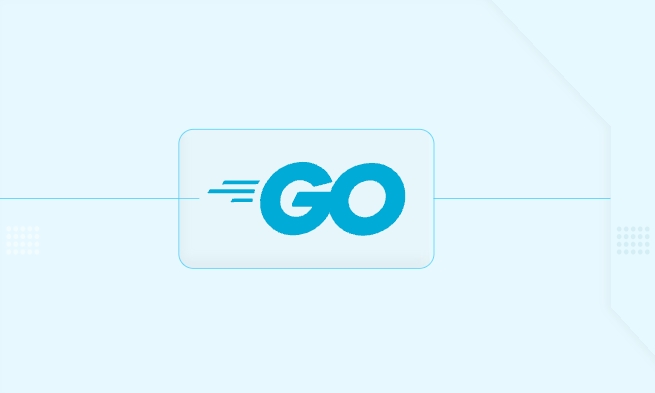How to ignore empty fields in golang json marshaling
Jul 07, 2025 am 12:25 AMIn Go's JSON serialization, empty fields can be ignored through the omitempty option of the json tag. 1. Usage method: Add omitempty to the json tag of the structure field, such as json:"age, omitempty"; 2. Values ??that are considered "empty" include: 0 of the numeric type, "" of the string, false of the boolean, nil pointer, arrays, slices, maps and structs with length 0 or completely empty; 3. Note: When the boolean value is false, it will be ignored, and even if the pointer points to a zero value, it will not be ignored; 4. Omitempty is also applicable to nested structures; 5. Custom requirements can be handled by implementing the json.Marshaler interface. The rational use of omitempty can improve the quality of JSON output and reduce the amount of data transmission.

During Go's JSON serialization process, if you want to ignore empty fields in the structure (such as zero values ??or nil ), there is actually a very straightforward way: use the omitempty option of the json tag. This avoids passing meaningless default values ??to the receiver, especially when communicating with front-end or other services.

Ignore empty fields using omitempty
Go's standard library encoding/json supports adding omitempty to the json tag of structure fields. As long as the field is "empty" (such as 0 , "" , nil , false , etc.), the field will not appear in the final JSON output.

For example:
type User struct {
Name string `json:"name"`
Age int `json:"age,omitempty"`
Email string `json:"email,omitempty"`
} If you create a User instance:

u := User{Name: "Alice"}The output JSON will be:
{
"name": "Alice"
} Age and Email fields that are not set are automatically ignored.
Which values ??will be considered "empty"?
omitempty does not just determine whether it is nil , it has its own set of rules to determine whether the field is empty:
- Numeric type (int, float): zero value (0, 0.0) will be ignored
- String : empty string
""is ignored - Boolean value :
falsewill be ignored (note this!) - Pointer : Pointer to zero value will not be ignored (for example,
new(int)points to 0) butnilpointer will be ignored - Array, slice, map, struct : will be ignored only if the length is 0 or all fields are empty
Therefore, you should pay special attention when using it. For example, after adding omitempty to the Boolean field, it will also be filtered out when the value is false , which may not be the result you want.
Nested structures are also applicable
If your structure contains nested structures or pointers, you can also use omitempty normally:
type Address struct {
City string `json:"city,omitempty"`
Zip string `json:"zip,omitempty"`
}
type User struct {
Name string `json:"name"`
Address *Address `json:"address,omitempty"`
} If Address is nil or the fields inside are empty, the entire address field will be ignored.
What if you want to customize it?
If your needs are more complex, such as if some fields are kept even if they are empty, or if you decide whether to serialize a certain field based on business logic, you cannot simply rely on omitempty . At this time, you can consider implementing the json.Marshaler interface to customize the output logic.
However, for most cases, it is enough to use omitempty well.
Basically that's it. Using omitempty rationally can make your JSON output cleaner and reduce unnecessary data transmission. But remember to pay attention to its behavioral boundaries, especially the boolean and zero values.
The above is the detailed content of How to ignore empty fields in golang json marshaling. For more information, please follow other related articles on the PHP Chinese website!

Hot AI Tools

Undress AI Tool
Undress images for free

Undresser.AI Undress
AI-powered app for creating realistic nude photos

AI Clothes Remover
Online AI tool for removing clothes from photos.

Clothoff.io
AI clothes remover

Video Face Swap
Swap faces in any video effortlessly with our completely free AI face swap tool!

Hot Article

Hot Tools

Notepad++7.3.1
Easy-to-use and free code editor

SublimeText3 Chinese version
Chinese version, very easy to use

Zend Studio 13.0.1
Powerful PHP integrated development environment

Dreamweaver CS6
Visual web development tools

SublimeText3 Mac version
God-level code editing software (SublimeText3)

Hot Topics
 What are the implications of Go's static linking by default?
Jun 19, 2025 am 01:08 AM
What are the implications of Go's static linking by default?
Jun 19, 2025 am 01:08 AM
Go compiles the program into a standalone binary by default, the main reason is static linking. 1. Simpler deployment: no additional installation of dependency libraries, can be run directly across Linux distributions; 2. Larger binary size: Including all dependencies causes file size to increase, but can be optimized through building flags or compression tools; 3. Higher predictability and security: avoid risks brought about by changes in external library versions and enhance stability; 4. Limited operation flexibility: cannot hot update of shared libraries, and recompile and deployment are required to fix dependency vulnerabilities. These features make Go suitable for CLI tools, microservices and other scenarios, but trade-offs are needed in environments where storage is restricted or relies on centralized management.
 How do I create a buffered channel in Go? (e.g., make(chan int, 10))
Jun 20, 2025 am 01:07 AM
How do I create a buffered channel in Go? (e.g., make(chan int, 10))
Jun 20, 2025 am 01:07 AM
To create a buffer channel in Go, just specify the capacity parameters in the make function. The buffer channel allows the sending operation to temporarily store data when there is no receiver, as long as the specified capacity is not exceeded. For example, ch:=make(chanint,10) creates a buffer channel that can store up to 10 integer values; unlike unbuffered channels, data will not be blocked immediately when sending, but the data will be temporarily stored in the buffer until it is taken away by the receiver; when using it, please note: 1. The capacity setting should be reasonable to avoid memory waste or frequent blocking; 2. The buffer needs to prevent memory problems from being accumulated indefinitely in the buffer; 3. The signal can be passed by the chanstruct{} type to save resources; common scenarios include controlling the number of concurrency, producer-consumer models and differentiation
 How does Go ensure memory safety without manual memory management like in C?
Jun 19, 2025 am 01:11 AM
How does Go ensure memory safety without manual memory management like in C?
Jun 19, 2025 am 01:11 AM
Goensuresmemorysafetywithoutmanualmanagementthroughautomaticgarbagecollection,nopointerarithmetic,safeconcurrency,andruntimechecks.First,Go’sgarbagecollectorautomaticallyreclaimsunusedmemory,preventingleaksanddanglingpointers.Second,itdisallowspointe
 How can you use Go for system programming tasks?
Jun 19, 2025 am 01:10 AM
How can you use Go for system programming tasks?
Jun 19, 2025 am 01:10 AM
Go is ideal for system programming because it combines the performance of compiled languages ??such as C with the ease of use and security of modern languages. 1. In terms of file and directory operations, Go's os package supports creation, deletion, renaming and checking whether files and directories exist. Use os.ReadFile to read the entire file in one line of code, which is suitable for writing backup scripts or log processing tools; 2. In terms of process management, the exec.Command function of the os/exec package can execute external commands, capture output, set environment variables, redirect input and output flows, and control process life cycles, which are suitable for automation tools and deployment scripts; 3. In terms of network and concurrency, the net package supports TCP/UDP programming, DNS query and original sets.
 What are functional options patterns in Go, and when are they useful for constructor design?
Jun 14, 2025 am 12:21 AM
What are functional options patterns in Go, and when are they useful for constructor design?
Jun 14, 2025 am 12:21 AM
FunctionaloptionsinGoareadesignpatternusedtocreateflexibleandmaintainableconstructorsforstructswithmanyoptionalparameters.Insteadofusinglongparameterlistsorconstructoroverloads,thispatternpassesfunctionsthatmodifythestruct'sconfiguration.Thefunctions
 How do I call a method on a struct instance in Go?
Jun 24, 2025 pm 03:17 PM
How do I call a method on a struct instance in Go?
Jun 24, 2025 pm 03:17 PM
In Go language, calling a structure method requires first defining the structure and the method that binds the receiver, and accessing it using a point number. After defining the structure Rectangle, the method can be declared through the value receiver or the pointer receiver; 1. Use the value receiver such as func(rRectangle)Area()int and directly call it through rect.Area(); 2. If you need to modify the structure, use the pointer receiver such as func(r*Rectangle)SetWidth(...), and Go will automatically handle the conversion of pointers and values; 3. When embedding the structure, the method of embedded structure will be improved, and it can be called directly through the outer structure; 4. Go does not need to force use getter/setter,
 What are interfaces in Go, and how do I define them?
Jun 22, 2025 pm 03:41 PM
What are interfaces in Go, and how do I define them?
Jun 22, 2025 pm 03:41 PM
In Go, an interface is a type that defines behavior without specifying implementation. An interface consists of method signatures, and any type that implements these methods automatically satisfy the interface. For example, if you define a Speaker interface that contains the Speak() method, all types that implement the method can be considered Speaker. Interfaces are suitable for writing common functions, abstract implementation details, and using mock objects in testing. Defining an interface uses the interface keyword and lists method signatures, without explicitly declaring the type to implement the interface. Common use cases include logs, formatting, abstractions of different databases or services, and notification systems. For example, both Dog and Robot types can implement Speak methods and pass them to the same Anno
 How do I use the io package to work with input and output streams in Go?
Jun 20, 2025 am 11:25 AM
How do I use the io package to work with input and output streams in Go?
Jun 20, 2025 am 11:25 AM
TheGoiopackageprovidesinterfaceslikeReaderandWritertohandleI/Ooperationsuniformlyacrosssources.1.io.Reader'sReadmethodenablesreadingfromvarioussourcessuchasfilesorHTTPresponses.2.io.Writer'sWritemethodfacilitateswritingtodestinationslikestandardoutpu






